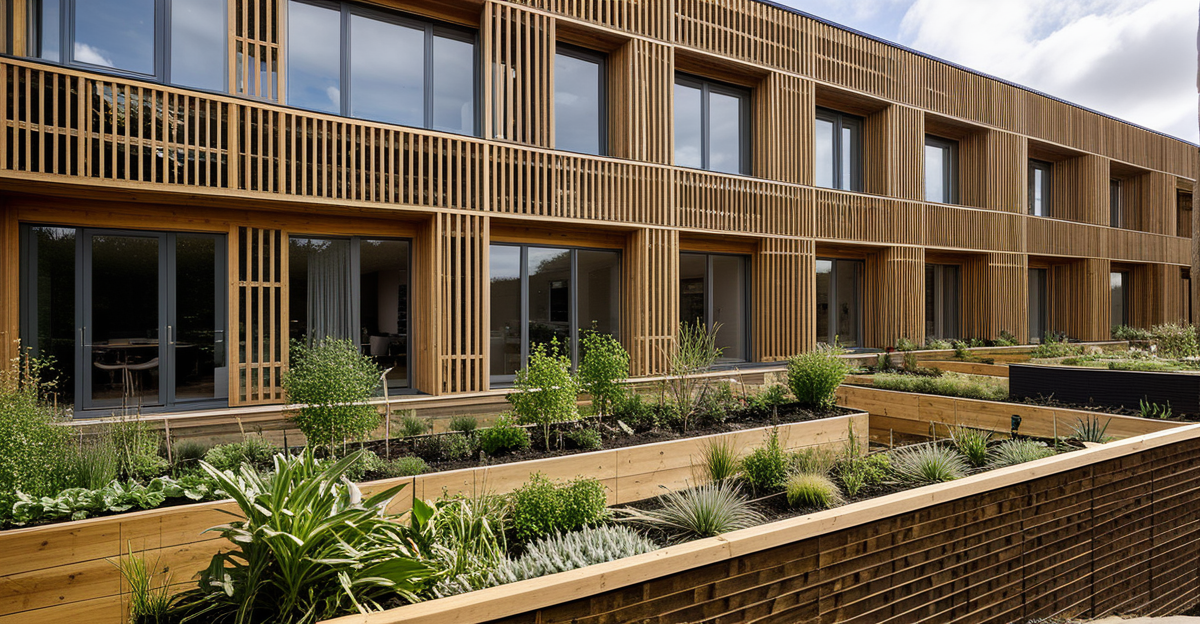Overview of Green Building Principles
Green building principles focus on designing and constructing structures with minimal environmental impact, prioritizing sustainability throughout the building lifecycle. At its core, green building emphasizes the efficient use of resources, such as energy, water, and materials, to reduce pollution and waste. Sustainable construction techniques, including the use of renewable materials and advanced energy-saving technologies, are integral to these principles.
The importance of sustainability in construction cannot be overstated. A sustainable building approach not only contributes to the conservation of ecosystems but also plays a crucial role in the fight against climate change. By adopting green building principles, the construction industry can significantly reduce its carbon footprint, thus mitigating its contributions to global warming.
Also to see : How does urbanization influence real estate prices in the UK?
Green building practices are designed to create healthier living environments, both indoors and outdoors. This holistic approach to construction ensures that buildings are energy-efficient, cost-effective, and environmentally responsible. Sustainable construction also considers the wellbeing of occupants, resulting in buildings that support healthier lifestyles and increased productivity.
In essence, the link between green building and reducing carbon emissions is vital; sustainable practices are not just beneficial but essential in achieving a more sustainable future for our planet. By embracing these principles, the construction sector takes significant strides toward a more environmentally friendly and socially responsible future.
Also to read : Does Investing in UK Real Estate Offer Long-Term Economic Benefits?
Benefits of Sustainable Construction
Sustainable construction offers a myriad of benefits that extend beyond environmental considerations, impacting economic and social spheres as well. At the forefront, energy efficiency is a critical advantage. Green buildings often incorporate advanced technologies such as solar panels, energy-efficient windows, and high-performance insulation, which significantly reduce the need for non-renewable energy sources. This not only lowers utility bills for building owners but also diminishes the overall environmental impact.
Another compelling benefit is the enhancement of property value through green certifications such as LEED (Leadership in Energy and Environmental Design). Such certifications denote a building’s commitment to sustainable practices, making it more attractive to potential buyers or tenants who prioritize environmental responsibility. This heightened appeal can result in higher resale values and rental rates, showcasing the economic viability of investing in green construction.
Moreover, sustainable buildings have a positive impact on occupant health and productivity. These structures often feature improved air quality, abundant natural light, and non-toxic building materials, creating a healthier indoor environment that can boost mood and productivity. The emphasis on wellness not only benefits individuals but translates to reduced health costs and increased efficiency, further proving the multifaceted advantages of sustainable construction.
Recent Trends in the UK Real Estate Market
The UK real estate market is experiencing notable shifts as green building adoption gains momentum. This trend is driven by an increasing awareness of the environmental impact of traditional construction methods and a growing consumer preference for sustainable and eco-friendly properties. As more developers and investors recognize the long-term benefits of incorporating green building principles, the demand for sustainable properties continues to rise.
One of the main drivers behind the growth of sustainable projects is the push for energy efficiency, which not only decreases carbon emissions but also leads to significant cost savings in the long run. As consumers become more environmentally conscious, their preferences influence the UK real estate trends, prompting developers to align their projects with these values. The result is an increased focus on sustainable construction practices within the industry, which helps to address both ecological concerns and market demands.
Furthermore, there is a marked impact on property values, with homes and commercial buildings meeting green standards often commanding higher prices. This trend reflects the economic viability and attractiveness of investing in real estate that aligns with green principles. As the market continues to embrace these environmentally responsible practices, the UK finds itself at the forefront of a real estate revolution, setting a benchmark for other nations to follow.
Government Policies Promoting Green Initiatives
The UK government has implemented a range of policies to promote green building initiatives, reflecting a commitment to addressing climate change and fostering sustainable development. These policies are pivotal in transforming construction practices across the nation.
Key legislations like the Climate Change Act and the UK Green Building Council provide a robust framework for enforcing sustainability regulations. These regulations are aimed at minimizing the environmental impact of new developments and retrofitting existing structures to adhere to higher sustainability standards. The government has rolled out various directives requiring new buildings to achieve specific energy performance standards.
In pursuit of advancing green building adoption, several incentives have been introduced for developers and investors. These include tax rebates, grants, and subsidies that lower the initial costs of implementing sustainable technologies. Such incentives are crucial in encouraging the industry to transition towards energy-efficient, low-carbon solutions.
Additionally, the government offers substantial funding and support programs to accelerate the adoption of green practices. By providing financial aid and resources, these programs play a significant role in overcoming barriers that might otherwise deter sustainable construction projects. This support underlines the importance of public-private collaboration in achieving national sustainability goals.
Altogether, the strategic deployment of policies and incentives underscores the UK’s leadership in promoting environmentally responsible building practices. This proactive approach not only boosts the construction sector’s economic viability but also ensures a progressive stride towards a greener future.
Case Studies of Successful Green Buildings in the UK
Examining successful green buildings within the UK offers valuable insights into how sustainable architecture is impacting the industry. This section explores several notable projects, showcasing achievements in sustainability and lessons learned from their development.
Notable Green Projects
One exemplary project is The Edge in Amsterdam, often cited in discussions on green architecture due to its innovative energy systems and smart building technology. Although located outside the UK, its influence resonates with UK developers aiming for cutting-edge projects. UK-based builds like the Eden Project and BedZED (Beddington Zero Energy Development) represent groundbreaking sustainable architecture that integrates renewable energy sources and promotes eco-friendly living.
Achievements in Sustainability
These projects exemplify substantial achievements in sustainability. For instance, BedZED is renowned for pioneering zero carbon and zero waste living, leveraging solar panels and sustainable building materials to minimize environmental impact. Such achievements demonstrate a commitment to energy efficiency and reduced carbon emissions, aligning with core green building principles.
Lessons Learned
Successful green building case studies provide key takeaways. Firstly, integrating sustainable practices from the initial stages of design improves project outcomes. Secondly, collaboration between architects, developers, and local authorities enhances innovation and compliance with sustainability regulations. These lessons underscore the importance of foresight and cooperation in advancing the future of sustainable construction.






